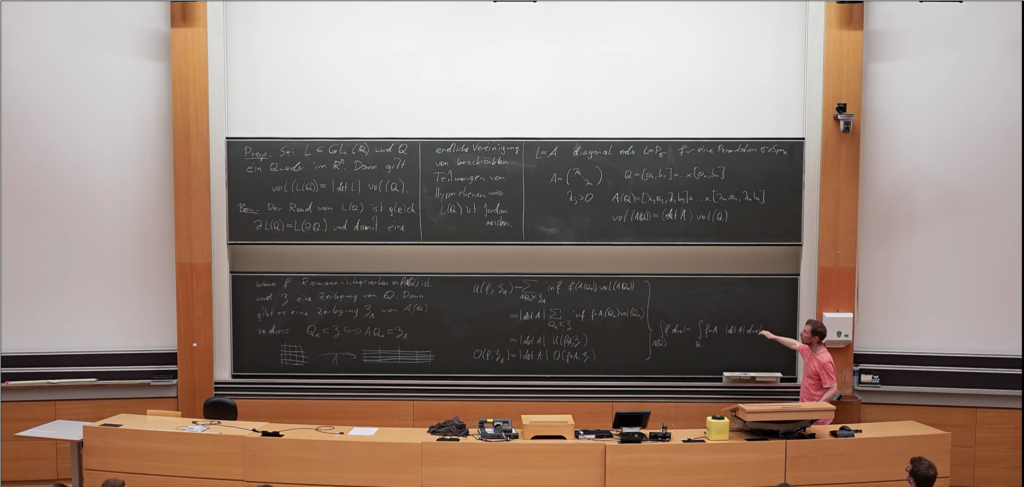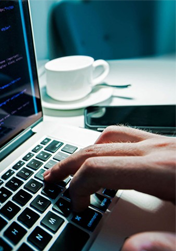Digital boards
ITS MMS PD is currently evaluating a solution for the automatic recording of lectures where the board plays a central role.
The offer from Multimedia Services for the automatic and free recording of lectures is not a complete solution, as it “only” records projected images and sounds of the lecturer. This means, it is unsuitable for use with a teaching resource we didn’t expect to be as popular as it still is: The blackboard.
Das Angebot der Multimedia Services für die automatische und kostenlose Aufzeichnung von Vorlesungen ist insofern unvollständig, als dass es «lediglich» die Projektion und das Audio der Vortragenden wiedergibt. Und damit ein didaktisches Werkzeug ausschliesst, das im Gegensatz zur Hellraumprojektion doch noch häufiger eingesetzt wird, als wir es erwartet hätten: Die Tafel.
Board and board content
At the moment, content on the board can only be recorded if a guided camera is used, cf. http://www.video.ethz.ch/lectures/d-math/2017/spring/401-1262-07L. This is the only way – in cooperation with the teacher – to ensure a good combination of overview and details, at a speed that supports the students in understanding the matter at hand. However, as the camera needs to be operated by a person, this recording option is not free of charge, which means if can actually only be used in certain circumstances, such as auditorium-to-auditorium transmissions, which are not subject to a charge as ITS MMS covers these costs on behalf of the Academic Services. In such cases, the recording is a free “side product” of the transmission to the second auditorium.
In order to enable teaching on the board to be able to benefit from automatic recordings that are free of charge, Multimedia Services have identified various technical possibilities, all of which, however, have so far proven to be too technologically complex, expensive or too unreliable. With the move towards 4K camera solutions (i.e. four-times as much detail as the current full HD cameras), there is now light at the end of the tunnel, because the resolution of these devices can provide an overview as well as details of the boards used by the ETH, which are particularly large. All that is missing is an appropriate replay option.
Partnerships
Colleagues from the University of Osnabrück have kindly provided us with an option here within the scope of the Opencast project: Their video player “Theodul” allows the user to zoom in on high resolution recordings, meaning it is possible to recognise far more than is shown on the board:
http://video4.virtuos.uos.de/engage/theodul/ui/core.html?id=de3c9160-adc9-474c-a3c0-73b1477a10c7
At the moment we are working with colleagues at the Technical University of Valencia on the implementation of this function into the video player on the video portal(“Paella Player”) as well as the technical details of encoding and distribution, which are very important due to the quantity of data generated by 4K video.
Planning
We hope to be able to carry out a first test run of this recording option during the autumn semester, 2017. This will however probably be limited to one auditorium due to the high costs of the camera. Please feel free to submit any feedback you have on the video player!
By the way, the so-called camera tracking with the “Plattner camera” is used for a completely different purpose: We use this technology to automatically track or portray the person, and this content is then used to supplement the content of the video. Although the board can be seen occasionally, this is not the obejctive of such camera tracking.
Contact
Olaf A. Schulte, ITS Multimedia Production & Distribution (ITS MMS)
erstellt am
in News



